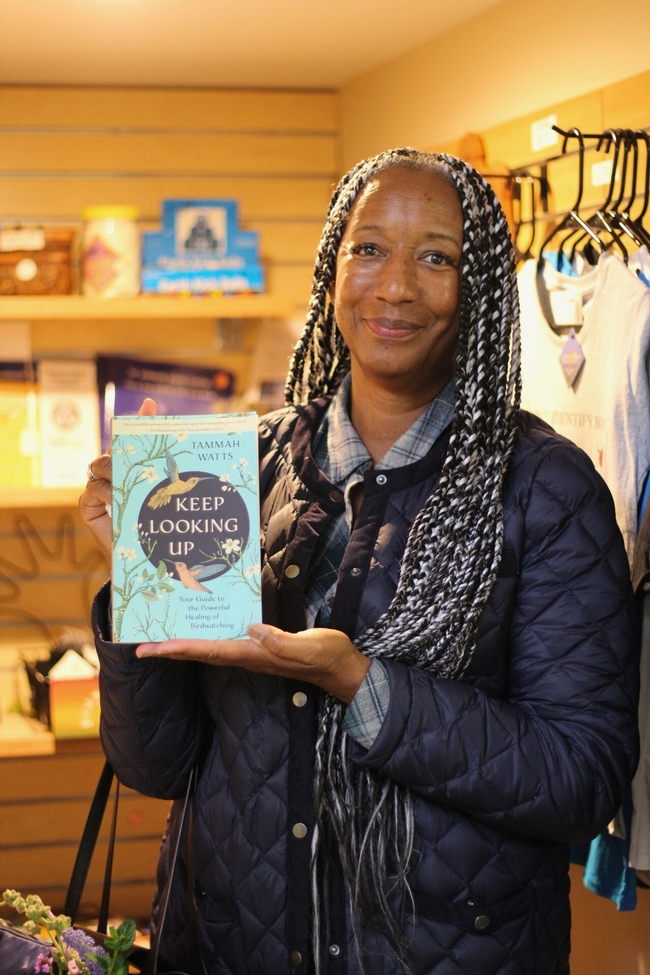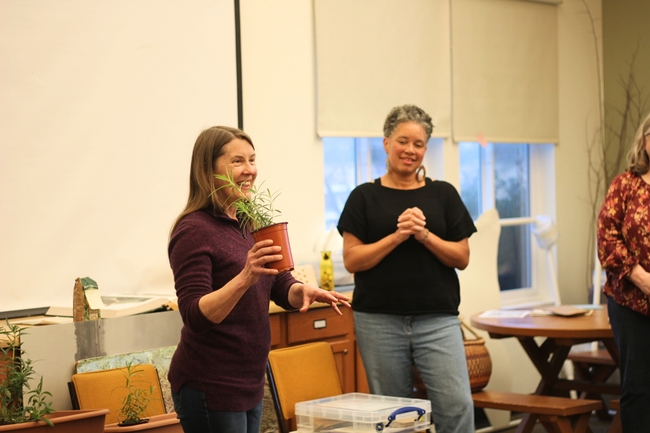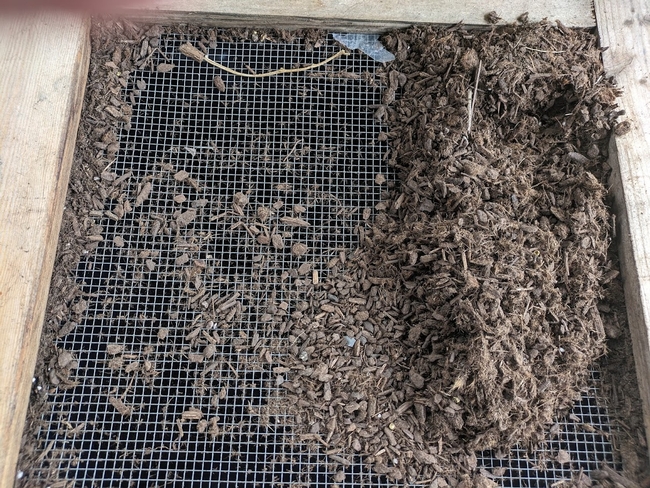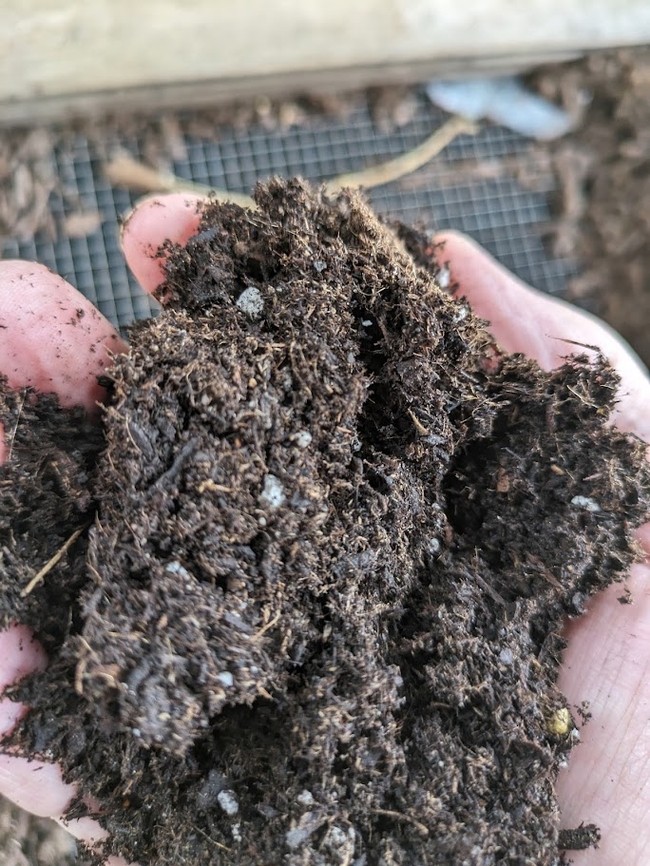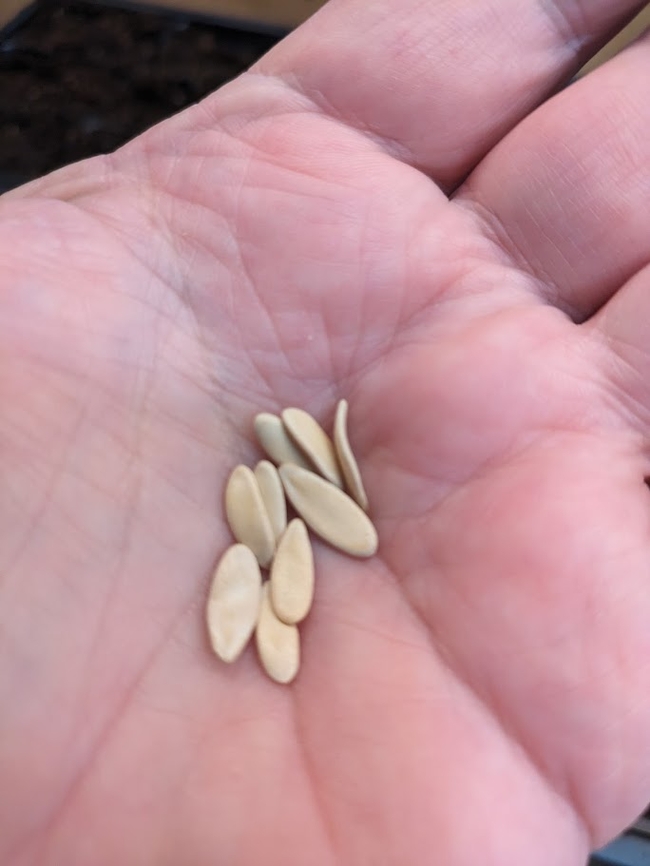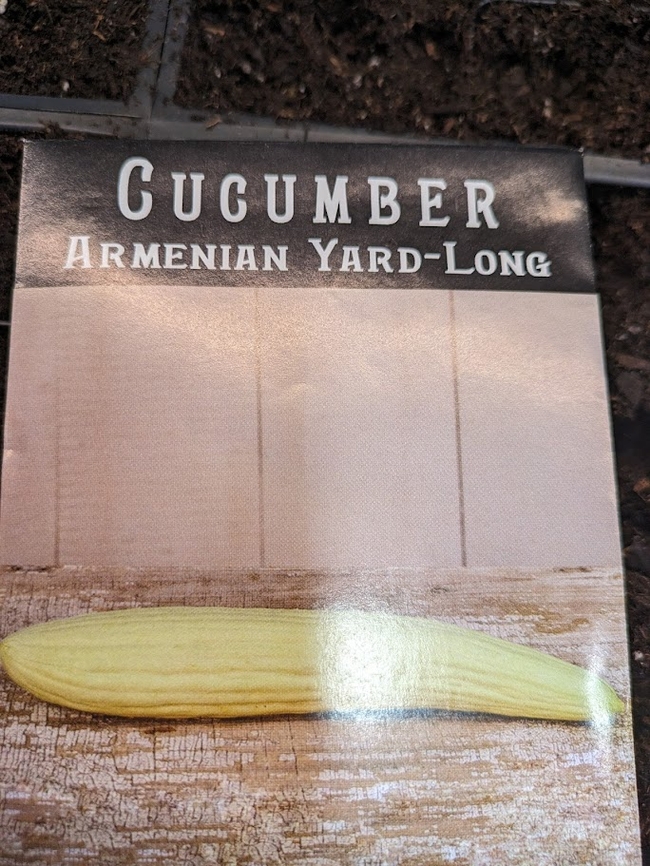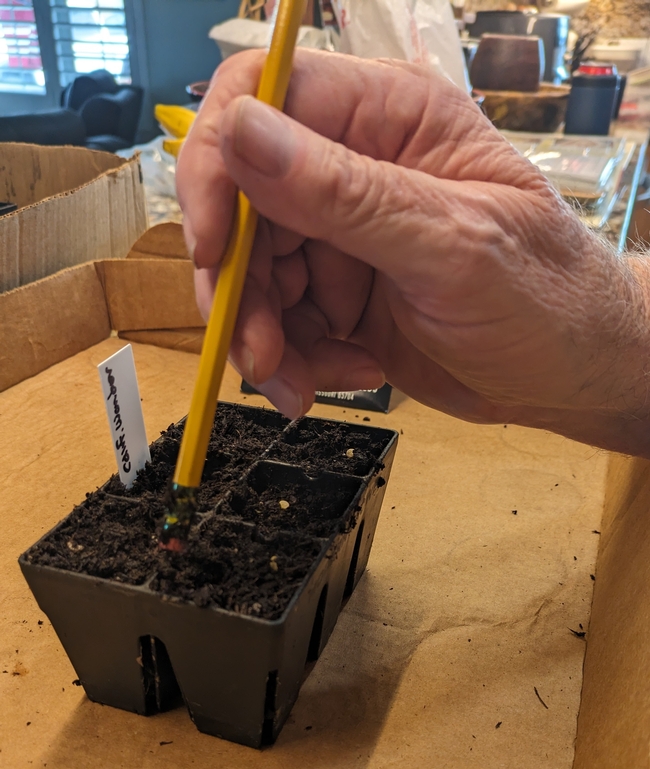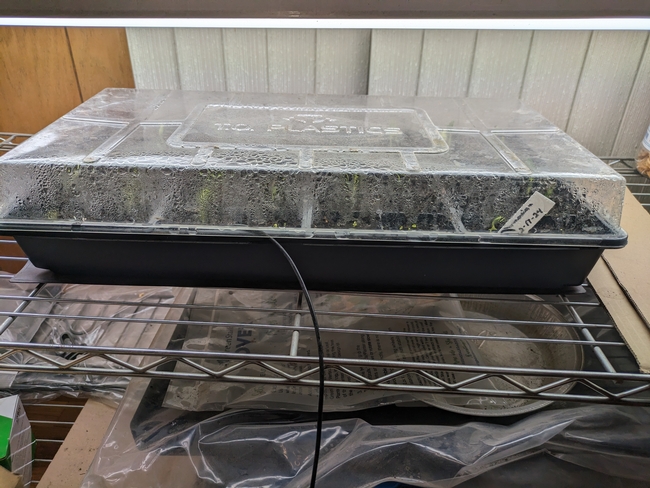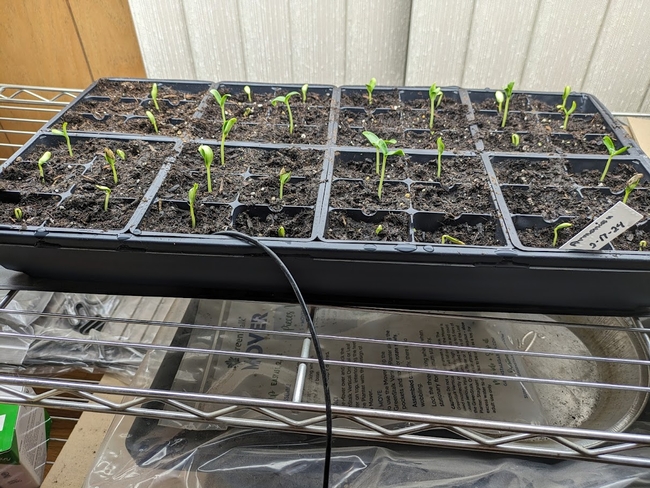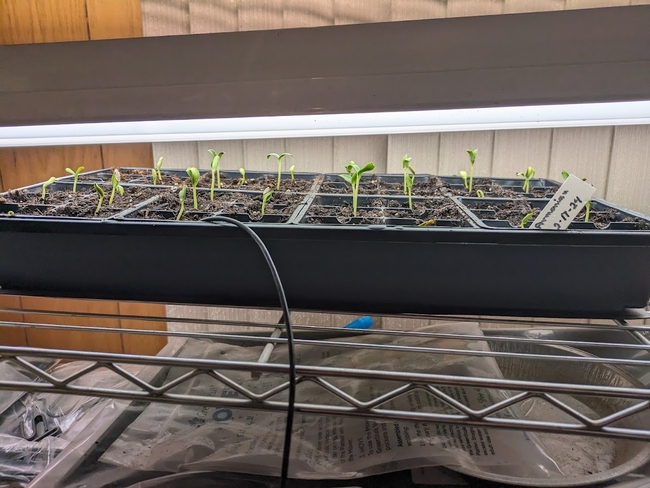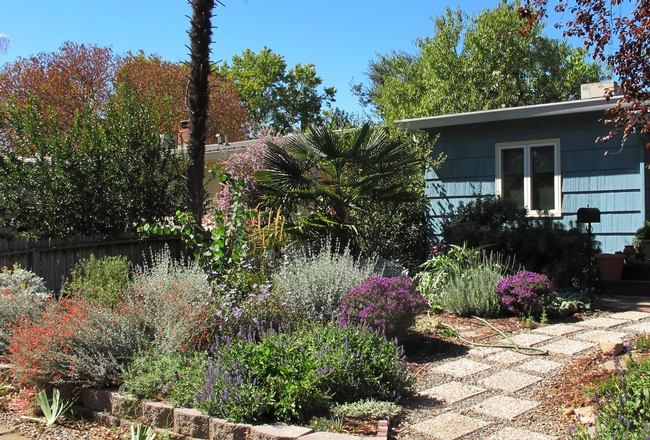- Author: Saoimanu Sope
Nearly 200 residents trained in past seven years by program, a part of UC Environmental Stewards
On one of her darkest days, Tammah Watts stood in front of her kitchen sink to fill a pitcher of water. Outside of her window, the San Marcos resident noticed a flutter in the distance. She spotted a small yellow bird emerge from the tree and her eyes grew in admiration.
Bird-watching from her kitchen window became an escape for Watts while she was temporarily homebound after a surgery. It's where she found connection beyond the interior space of her home.
“I started noticing other birds that had always been there. The yard didn't change, but my mind and my perspective did,” she said.
Eager to learn more and expose others to her new hobby and its healing power, Watts joined the University of California Environmental Stewards program, a statewide program housed under UC Agriculture and Natural Resources, to become a certified California Naturalist.
The program offers two environmental education certification courses: the California Naturalist course, which introduces people to the wonders of California's unique ecology and engages the public in the study and stewardship of the state's natural communities, and a separate Climate Stewards course.
One of the many strengths of the program is that it allows people from diverse backgrounds to find common ground in nature even if how they became interested varies, said Eliot Freutel, a community education specialist for the UC Environmental Stewards program in Southern California.
“Our partners that help us administer the course are organizations that already have access to the public and provide informal science education, such as natural history museums or Audubon societies,” Freutel added.
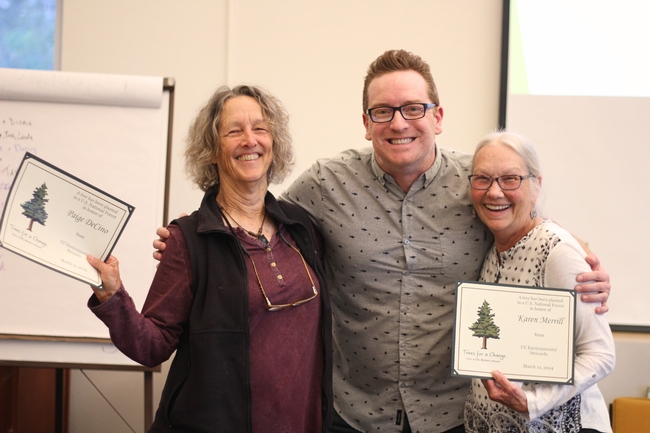
Welcoming a new cohort of environmental stewards
In early March, the longest-standing California Naturalist course in San Diego County graduated 25 new members, Watts being one of them, under Karen Merrill and Paige DeCino's instruction. For seven years, Merrill and DeCino have served as co-instructors at the Buena Vista Audubon Nature Center in Oceanside and graduated 166 members prior to their most recent and final class.
Transitioning into retirement, DeCino and Merrill reflected on their seven years of service and are proud to see younger and more diverse faces join the California Naturalist program. Tucker Shelton, who recently graduated alongside his mom, is among the few young people who have joined the program over the years. A love for nature began when Shelton discovered tide pools when he was just a boy. At 14 years old, Shelton wants to inspire a generation of youth with a passion and care for nature.
“When you're younger and your brain is still developing, you're the most interested in new things. If you find a passion at a young age, you'll most likely grow up with it becoming a part of you,” said Tucker, whose capstone project focuses on an essay about the endangered Townsend's big-eared bat and uses stamp art to raise awareness. His art will be featured and sold at an upcoming exhibit and all proceeds will be donated to the Volcan Mountain Wilderness Preserve in Julian.
Hannah Marquez, another recent graduate, was born and raised in San Diego. She values its cultural diversity and believes connecting the public to nature begins with language. In working with Tecolote Canyon Natural Park and Nature Center in Mission Valley to establish an updated native plant library, Marquez is providing relevant information and resources in English and Spanish.
“A lot of people aren't comfortable using technology, and relying on Google Translate isn't going to cut it,” said Marquez, adding that her parents' limited English inspired this project.
Marquez hopes to interest more people in growing native plants in their backyard and believes accessible information is the first step to doing so.
“This has been so rewarding for us,” said Merrill. “Typically, our students are already involved in the community, but for those who aren't, it's amazing to see them become a part of the community and engage in a way that they haven't before.”
DeCino agreed and said that she really hopes to find new instructors to keep the momentum of California Naturalists in San Diego County alive. “Even though we're retiring, we'll still be around here and there, but its important to us that we pass the torch,” DeCino said.
The future of California Naturalists in San Diego County
What's next for San Diego County, you ask?
“We definitely want to expand in the area. But right now, we're looking for alums who are interested in taking over the program held at Buena Vista Audubon Nature Center,” Freutel said. “I'm also hoping to secure more partnerships throughout San Diego County so that the course is offered in various places, not just North County, which can lead to accessibility concerns.”
Like other students, Marquez commuted an hour, each way, to participate in the UC Environmental Stewards program. “It's a worthwhile course, one that helps people have a positive impact in their own community,” said Freutel.
For Watts, helping people find healing and connection to the world around them – an experience her book, a guide to the powerful healing of bird-watching, discusses – is a priority. “It's not just about watching birds,” she said. “It's about noticing the tree the bird lives in, and the ground the tree is growing in.”
During a nature walk that Watts led for a group of kids, she noticed two sets of footprints in the dirt. Immediately, she could differentiate the two. “One belonged to a raccoon and the other belonged to a deer,” Watts said. “I was so excited that I could tell them apart, and I promise I didn't know this before taking the CalNat course.”
To learn how you can join the UC Environmental Stewards program and become a California Naturalist or Climate Steward, visit: https://calnat.ucanr.edu/Take_a_class/
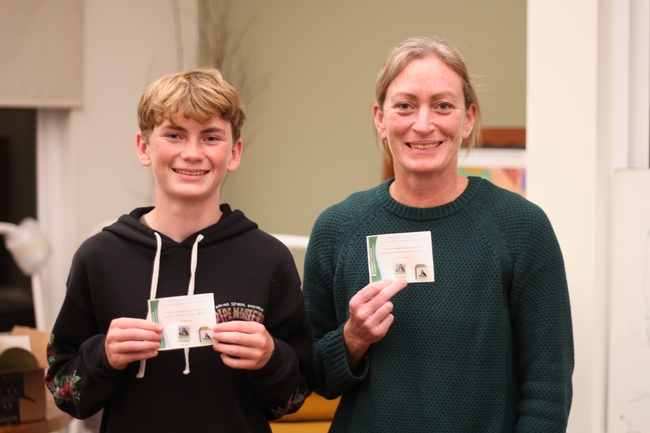
We are getting close to the typical average last frost date at March 3rd. So now is the time to start some cucumber, squash or melon seeds indoors.
Starting Mix
First, you need some seed starting mix. You can use ready-made mixes, or you can make your own by using potting soil mix you have on hand. Since I always have some potting soil mix on hand for use in containers or up potting starts, I use that. I suggest screening it through a ¼ inch hardware cloth sieve to take out any larger pieces which might block the seeds from poking through the mix.
Once the soil is hydrated, add it to the seed trays. Since cucumber, squash, and melon seeds are larger seeds, they are planted at about twice their size or roughly ½ inch depth.
Next, place your starter tray on a rack or designated place, covering it with a humidity dome. If you have plant-start heating mats, they can be very helpful by warming the soil, but are not absolutely necessary. It is customary to “bottom” water seeds, so add water to the tray your seeds are in. The soil should be moist enough from the initial wetting process described above, thus only a little water should be needed in the tray. Add water only when soil dries out slightly. After about 15 minutes, if any water remains in the tray, drain it. The humidity dome should stay on until the seedlings begin to show.
Seedlings
The Armenian cucumber seeds in these photos germinated over five days from February 17th through the 22nd with the humidity dome being removed on February 22nd.
At this point the seedlings should be placed under grow lights slightly above their height. Adjust the height of the light as the seedlings grow. If the grow lights are too high, the seedlings will likely become “leggy,” because they are stretching to reach more light. This will cause them to be weaker due to the main stem being too long and thin, and likely top heavy. The first set of leaves on the seedlings are the cotyledon leaves. The next set of leaves you will see are the first true leaves and the cotyledon leaves will likely drop off.
Preparing Plants for the Garden

Hardening off is the process of acclimating the new seedling to the outdoors. This starts by moving them outdoors the first day for perhaps 2 hours. This continues daily, increasing amount of time of outdoor exposure each day for about 1 week. By then your new starts should be able to handle being transplanted into your outdoor garden.
If you prefer not to jump start your growing season by starting seeds indoors, cucumbers, squash, and melon seeds can be started in the ground in late March. Just be sure to check the long-range weather forecast to see if any possible freezing temperatures might happen.
Tim Long has been a UC Master Gardener in Stanislaus County since 2020. All photos are by the author.
- Author: Kathy Keatley Garvey
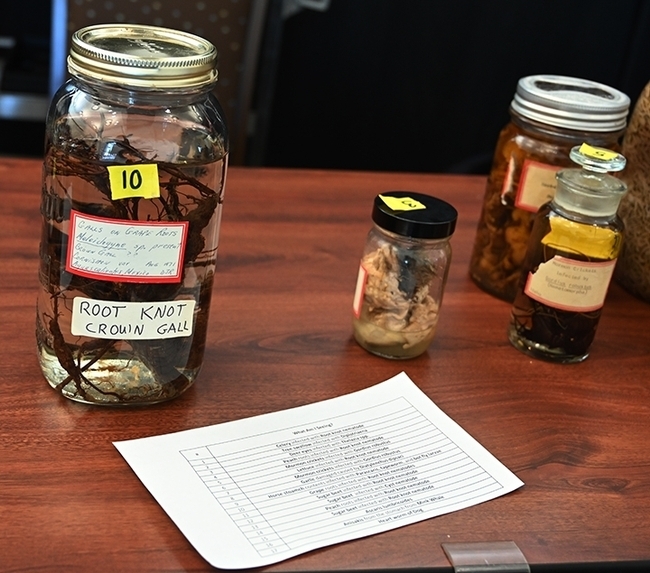
Plans are underway for the 13th annual UC Davis Biodiversity Museum Day, a free "Super Science Day" for the public to see science in action and learn about 10 UC Davis museums and collections.
The event is set for Saturday, Feb. 10, the weekend before Presidents' Day weekend.
Participating will be:
- Anthropology Museum, 328 Young Hall and grounds, open from noon to 4 p.m.
- Arboretum and Public Garden, Habitat Gardens in the Environmental GATEway, adjacent to the Arboretum Teaching Nursery on Garrod Drive, 10 a.m. to 2 p.m.
- Bohart Museum of Entomology, Room 1124 and main hall of the Academic Surge Building, 455 Crocker Lane, 10 a.m. to 2 p.m.
- Botanical Conservatory, the greenhouses along Kleiber Hall Drive, 10 a.m. to 2 p.m.
- California Raptor Center, 1340 Equine Lane, off Old Davis Road, 9 a.m. to 3 p.m.
- Center for Plant Diversity, Katherine Esau Science Hall off Kleiber Hall Drive, 10 a.m. to 2 p.m.
- Nematode Collection, Katherine Esau Science Hall, off Kleiber Hall Drive, 10 am. to 2 p.m..
- Museum of Wildlife and Fish Biology, Room 1394, Academic Surge Building, 455 Crocker Lane, 10 a.m. to 2 p.m.
- Paleontology Collection, Department of Earth and Planetary Sciences, 1309 Earth and Physical Sciences Building, 434 LaRue Road, 10 a.m. to 2 p.m.
- Phaff Yeast Culture Collection, Robert Mondavi Institute Brewery and Food Processing facility, Old Davis Road, 10 a.m. to 2 p.m.
Each year more than 200 volunteers--students, staff and faculty--from across campus help more 4,000 visitors--including other UC Davis students, staff and faculty--"learn about biodiversity through our amazing biological collections," said UC Davis Biodiversity Museum Day chair Tabatha Yang, education and outreach coordinator for the Bohart Museum of Entomology.



- Author: Kathy Keatley Garvey
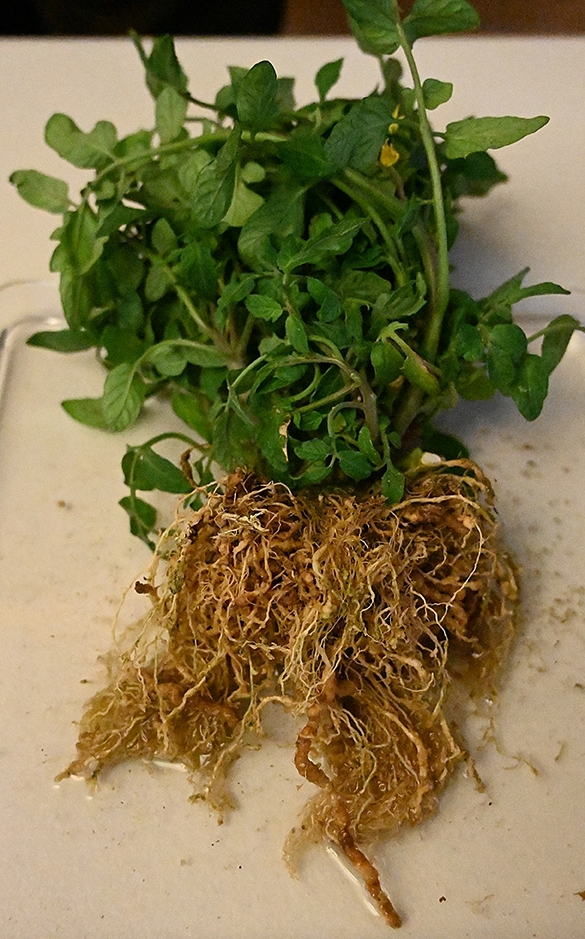
The event: The 13th annual UC Davis Biodiversity Museum Day, a Super Science Day.
It's an opportunity to see scientists in action.
It's day when you can visit such biological museums or collections as the Phaff Yeast Culture Collection, Bohart Museum of Entomology, Museum of Wildlife and Fish Biology, Arboretum and Public Garden, California Raptor Center, Earth and Planetary Sciences Paleontology Collections, Botanical Conservatory, Center for Plant Diversity, Nematode Collections, Marine Invertebrate Teaching Collection, and the Department of Anthropology Museum.
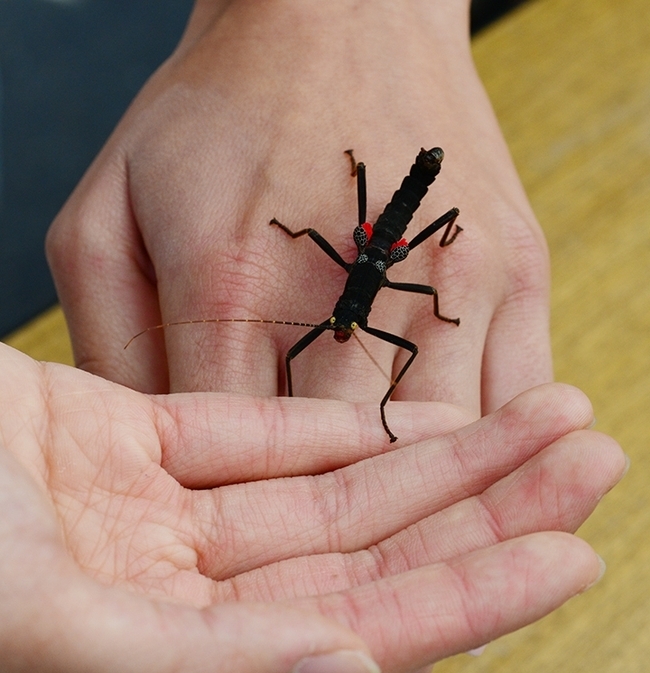
And it's free and open to the public.
The date has not been set, but the first few Biodiversity Museum Days took place on Presidents' Day weekend. The committee will announce the date soon.
"Each year more than 200 volunteers--students, staff and faculty--from across campus help more 4,000 visitors--including other UC Davis students, staff and faculty--learn about biodiversity through our amazing biological collections," said UC Davis Biodiversity Museum Day chair Tabatha Yang, education and outreach coordinator for the Bohart Museum of Entomology.
Donations, from $5 on up, may be made at this website: UC Davis October Crowdfund campaign. It costs approximately $5000 to finance the Biodiversity Museum Day, the committee related. Donors may make contributions to honor a loved one or a favorite organism, such as a praying mantis, plant, nematode or fossil. The crowdfunding campaign ends at 11:59 p.m., Tuesday, Oct. 31.
The committee asks that you:
- Share the news with three friends/co-workers/neighbors
- Post on your social media. The UC Davis Crowdfund has links for Facebook, LinkedIn and Twitter (or X)
- Donate here
Coordinating the UC Davis October Crowdfund campaign are Yang; Brennen Dyer, collections manager for the Bohart Museum; and Melissa Cruz Hernandez, outreach and leadership program manager for the UC Davis Arboretum and Public Garden.



Hello Sprout readers, We have a few questions for you…
- Are you tired of your landscape and ready for something new?
- Have you been thinking about replacing all or part of your lawn?
- Are you confused about how to transition from sprinkler to drip irrigation?
- Do you want to attract insect pollinators and birds to your landscape?
If you answered “yes” to any of these questions, this is the workshop for you! Learn how to replace your sprinkler system and convert to drip, hear about some low water use plants, including a list of plants that can provide bloom year-round.
Bring your questions! This is an especially great opportunity to speak with Tim Long, an expert in drip irrigation systems, as well as our other speakers who have experience with growing CA natives and lawn removal.
Workshop cost includes seeds, plants, and presentation materials and helps support our program. If you are unable to afford to pay for this class, not a problem! Just sign up so we know you are coming.
Where: Ag Center, Harvest Hall rooms D&E, 3800 Cornucopia Way, Modesto, 95358.
When: Saturday, October 7, 9:00 AM - 12:00 PM
Cost: $10
Questions? (209) 525-6800
Sign Up: https://ucanr.edu/new/front/yard
Instructors: UC Cooperative Extension, Stanislaus County Master Gardeners - Heidi Aufdermaur, Tim Long, Rhonda Allen, Doone Cockrell, and Bobbie Green.

